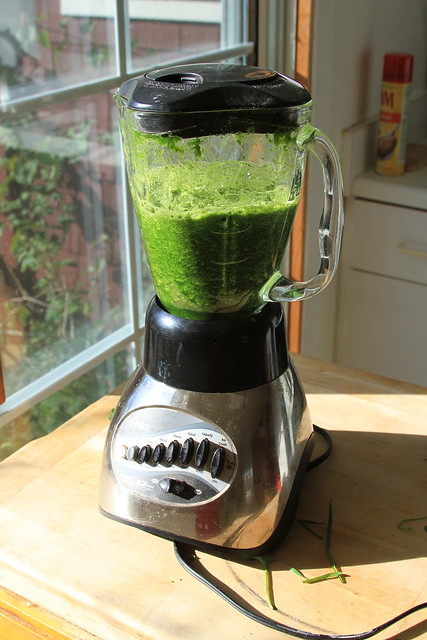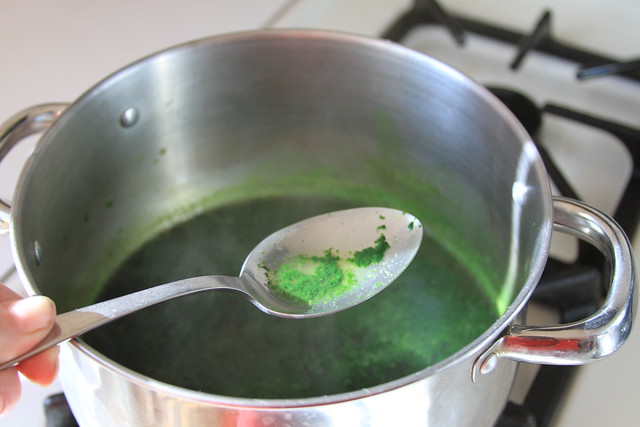Leaf Curd (Leafu) is a solid food made from the coagulated protein curds of
pulped edible leaves such as nettle leaves.
Leafu makes protein available from leaves which would otherwise be too bulky in
fiber to have significant nutritional value.
I try to post this recipe every year. It is not particularly delicious,
although I've only made smaller amounts. I'd like to bake a loaf of bread with
the powder, but I haven't had the time to process much more than a cup or two.
I don't really expect anyone to make it. I just want people to know that if
things get tough, there are always options.
Leafu is feeding a lot of starving people. The original research used kaffir
lime (Citrus × hystrix), which is used in a lot of South Asian cooking. The
nutritional breakdown from the original work was that 20 grams of powder would
provide 12 grams of protein. The amounts of vitamins and minerals (such as 440
mgs of calcium and 49 mg of iron) are impressive.
I opted to use chickweed, miner's lettuce and mallow for my first try a few
years back. I've used other greens as well since then, especially nettles, and
the taste hasn't changed much. Green. Certainly palatable. Today, I'm seeing
a lot of bloggers talking about leaf concentrate so the idea is catching on.
There are pictures in the photo album.
It doesn't require specialized equipment. The toughest part is finding a really
tightly weaved sieve. I really haven't found the perfect strainer yet, but the
last time worked the best. I used a silk scarf that had a very 'open' weave.
At first I tried a paint strainer but the holes were too big and the protein
slipped through. Cheesecloth is too large a weave as well (for that final
press).
For my first batch, I started with about 8 cups of greens. I mixed chickweed,
mallow, grass and miner's lettuce. From everything that I've read, tree leaves
can be used as well.
Break the cells mechanically by chopping them very, very finely. This is the
most tedious part of the process. You could use a blender just as easily, (and
I did in later trials) but I wanted to know how tough it would be to do by
hand. It wasn't tough, just boring.
I used cheesecloth to squeeze out the liquid out of the macerated plant
material. I placed the resulting liquid in a soup pot and heated it up to about
95 degrees. After about 2 minutes, you can see the proteins start to aggregate.
The final squeeze was the toughest. The only fine cloth that I had was a paint
strainer and that had too coarse a weave so I lost about 1/2 of the proteins.
I'm still looking for the perfect strainer for this step.
In the shot above, you can see the dark green 'curds'.
The curds in the strainer bag, above. Don't squeeze too hard.
The paste as it was was certainly palatable. Pretty much tasting like what you
would expect. You can shape it into balls or cubes or loaves.
You could add the paste to smoothies or just about anything.
I dried the paste (spreading it thinly on foil). This powder could be added to
baked goods, etc. for a nutritional bump, or used on it's own in survival
situations.





No comments:
Post a Comment